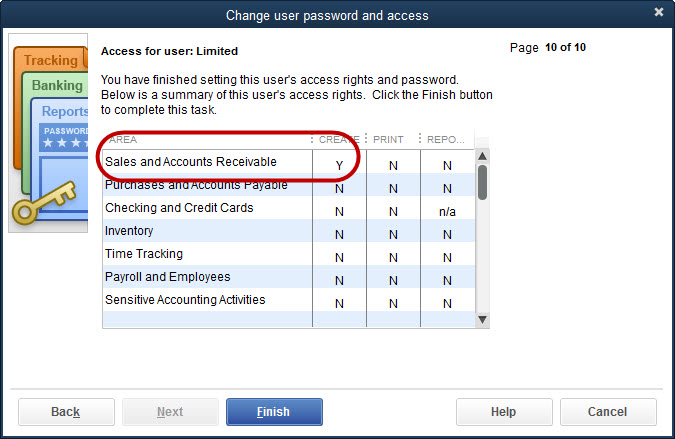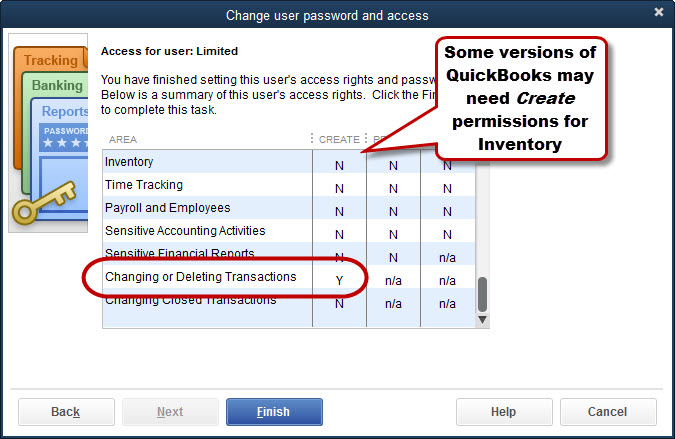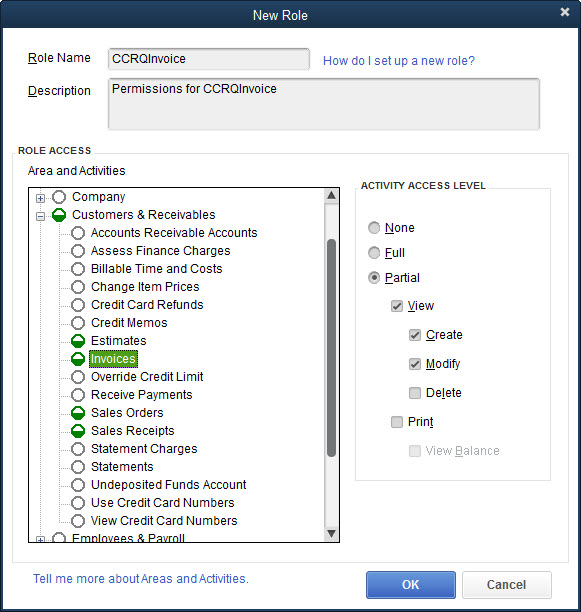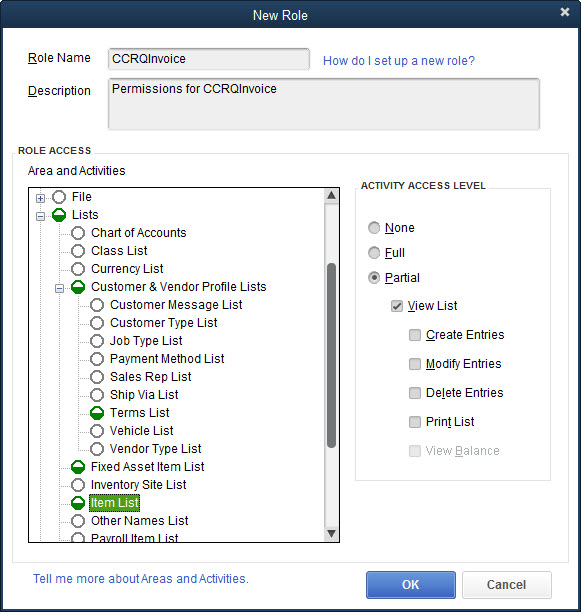If you use user accounts in QuickBooks and limit user permissions (and you should!), you need to provide users of CCRQInvoice with a basic set of permissions. It can be a bit confusing, because of the odd way that Intuit has configured things in QuickBooks. Here’s the basic permissions that you need to be able to use CCRQInvoice.
The Error You Might See…
If you have CCRQInvoice working with QuickBooks as the admin user, but you then open QuickBooks with a different user account that doesn’t have the proper permissions, you’ll usually get a 3260 error code.
There are several possible errors that can be displayed, but the common thread is the “3260” code at the end. That indicates a QuickBooks user permission error. The user running CCRQInvoice doesn’t have the correct data access permissions necessary to work with the transaction.
QuickBooks Pro and Premier Permissions
This is pretty easy. All you usually need to be able to run CCRQInvoice with QuickBooks Pro and QuickBooks Premier is to set Sales and Accounts Receivable Create permissions to Yes, and set Changing or Deleting Transactions to Yes.
With some older versions of QuickBooks you may also need Create Transactions permissions for Inventory. This might also be the case in some non-US versions of QuickBooks.
QuickBooks Enterprise Permissions
QuickBooks Enterprise is more complicated, and somewhat confusing. In Enterprise you have users and you have roles. You create the permissions in the roles and then assign the role to the user.
In addition, Intuit has a tendency to tinker with permission settings every once in awhile, so there may be some variations in how this works in different versions/releases.
There are two areas that you have to work with, Customers & Receivables and Lists. The permissions that I’ll lay out here should provide you with access to all features of CCRQInvoice (as of the version currently in production at the time this is being written), including sorting. You might be able to get by with fewer permissions if you don’t sort, although that isn’t certain.
In Customers & Receivables you need to provide View, Create and Modify permissions for Estimates, Sales Orders and Invoices (assuming you will work with each).
For Lists we have a number of permissions to set:
- Item List needs to be set to View List.
- Fixed Asset Item List needs to be set to View List. This isn’t intuitive – but internally, the Fixed Asset Items are actually a part of the overall Item List, so when CCRQInvoice asks for a list of all items, it has to be able to see the Fixed Asset Items as well. This catches a lot of people.
- Terms List, which is a part of the Customer & Vendor Profile Lists, needs to be set to View List. This is a hard one to figure out – there isn’t any logical reason for this, but without it you can’t use the program.
Note that there isn’t a Customer List permission in the QuickBooks preferences – I think that may be why we have to have the Terms List there, something is slopping over to cover the customer list. But that is speculation.
In some cases you may need to give the user access to “sales tax” as well.
If you set your user permissions to be at least what I’ve listed above, your user accounts should be able to access CCRQInvoice without difficulty.




